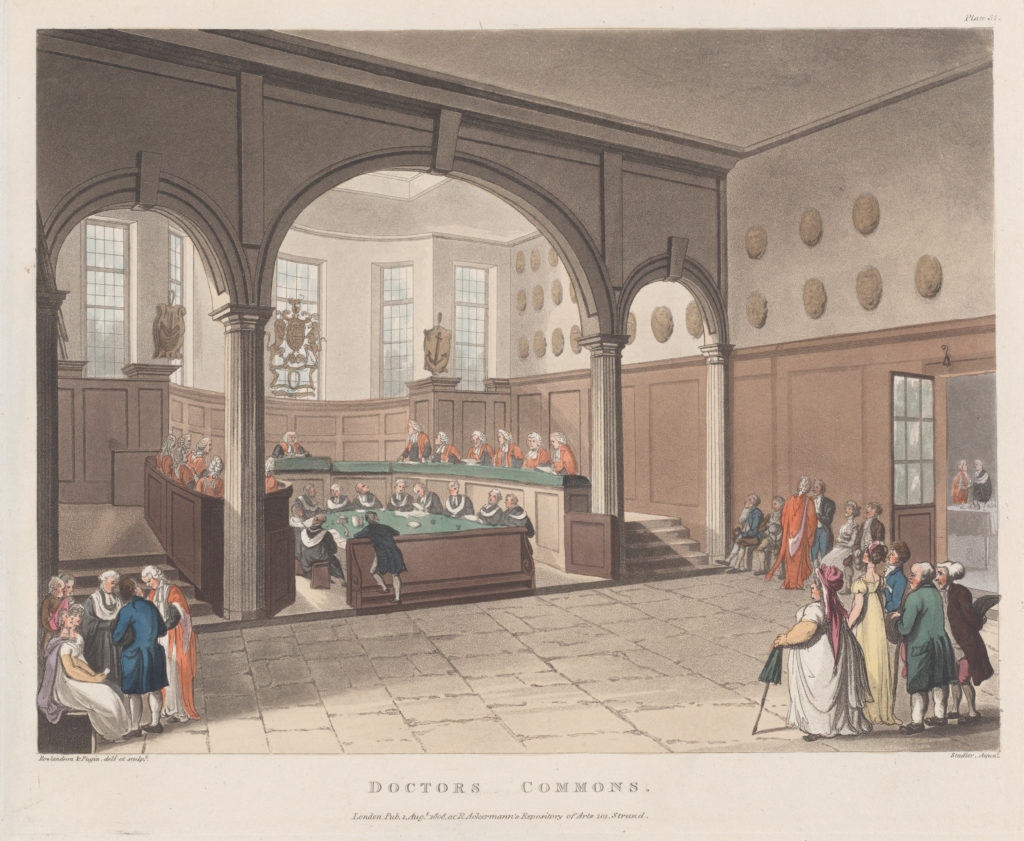Control of the “Version of Record” has come to serve as one of the greatest assets of scholarly publishers. It allows them to maintain their centrality in the scholarly communication system. An important strand of the green open access movement has as its purpose to disrupt the value of the Version of Record (VOR). In turn, publishers are struggling to maintain control on this front. In the end, the set of views about the VOR that matter most are those of researchers. The recently released white paper Exploring Researcher Preference for the Version of Record adds to our understanding by bringing researcher perceptions into this conversation.

The NISO Recommended Practice NISO RP-8-2008: Journal Article Versions defines the VOR as:
A fixed version of a journal article that has been made available by any organization that acts as a publisher by formally and exclusively declaring the article “published.”
It is not surprising then, a great deal of the work of a scholarly publisher is focused on producing the VOR, which is typically also closely tied to a journal’s business model with closed access articles funded via subscriptions and open access articles funded via APCs or other payments to publish.
In the realm of supporting open access, funders are also often focused on the VOR. For example, when discussing its Rights Retention Strategy, cOAlition S explains its preference for the VOR to be open access:
Not only does the latter contain all the changes from the copyediting process, journal formatting/branding etc., but it is also the version maintained and curated by the publisher, who has the responsibility to ensure that any corrections or retractions are applied in a timely and consistent way.
For this reason, our preferred option is to ensure that the VOR is made Open Access.
Nonetheless, other versions of articles are also often available on preprint servers, in library institutional repositories, on author websites, and via platforms like Europe PMC and ResearchGate. GetFTR also includes a mechanism for publishers to provide alternative versions of articles when a researcher does not have subscription access via their institution (which some publishers are beginning to explore on their own platforms as well) and the partnership between ResearchGate and Springer Nature has evolved to provide alternative versions rather than the full VOR to unentitled users.
While some have focused their attention on the differences between the VOR and other versions, librarians are also increasingly exploring whether these alternative versions can substitute for the VOR in order to control their expenditures. These efforts are helped along by Unsub, which is particularly aimed at encouraging libraries to break the Big Deal by identifying high value subscriptions and canceling the rest.”
It was against this backdrop that I read Exploring Researcher Preference for the Version of Record, which reported on research Springer Nature conducted in collaboration with ResearchGate. It is perhaps obvious to caveat that it is in Springer Nature’s interests to use this study to reinforce the value of the VOR, a central position of a recent keynote by CEO Frank Vrancken Peeters at the APE 2021 conference.
The study was conducted “in situ” and leveraged the Springer Nature syndication pilot project that posted VOR articles for access on the ResearchGate platform. As Mithu Lucraft, Director for Content Marketing Strategy, of the Springer Nature Group and one of the study’s co-authors explained to me, the survey was presented to ResearchGate users that were logged in and who had interacted with at least one Springer Nature publication in the 60 days prior to the survey being live in October 2020.
Importantly, survey participants were not only asked to choose which version of an article they prefer but also which versions they would feel comfortable using for different purposes. In many cases, participants indicated that multiple different versions would be acceptable for a given use, which indicates that a preprint or accepted manuscript can substitute for the VOR in some use cases but perhaps not all.
The key findings reported from the study are:
- Researchers prefer to read and cite the article VOR. 83% of respondents preferred working with the VOR for citing content in their own work, compared with 9% preferring AMs [author manuscripts], and 2% preferring preprints.
- Researchers believe the article VOR is easier to read and is more reliable. In open text answers, respondents commented on the reassurance that peer review and proof of publication give to the VOR, pointing to the lack of time researchers have to read a large volume of content, and the desire to quickly assess and cite an article.
- Researchers are more likely to look for ways to find the article VOR, rather than an AM or preprint. Where authors did not have access to the VOR (i.e. they did not have access via a subscription or as a result of it being published OA), the majority — nearly 9 in 10 researchers — will take direct action to gain access to the VOR (e.g., contact the author).
- Alternative versions of the article can offer value, but with caveats on use. Even though the VOR is preferred, many researchers also feel comfortable using a preprint or an AM for reading and, in some instances, for citing. Speed of availability, in particular, is noted as a benefit from preprints.
- The article VOR is considered the most authoritative and credible source by the majority of researchers. Researcher preference for the VOR highlights the value added by publishers, in particular with reference to the ‘stamp of credibility’ that publication in a recognized journal brings.
According to Carrie Webster, Vice President for Open Access, Springer Nature was motivated to undertake this study as part of their strategy to transition to gold open access and in support of their vision of a sustainable path to fostering open science. The results indicate that, while non-VOR versions can offer value, with speed of availability particularly noted as a benefit of preprints, there remains a significant preference from researchers for the VOR as soon as it is available.
Researcher preference for the VOR relates to it providing, as Carrie termed it, “a complete reading experience.” Through the VOR, researchers can read the full text, see embedded figures, and access supplementary information and extended data all from a single source, without having to search for content from repositories or other third party platforms. The VOR on the publisher platform often offers downloadable citation details, article-level metrics, enhanced reference lists with links to articles or full-text, and links to corrections and additional commentaries, which are typically not available via a preprint or author accepted manuscript in a repository or on a preprint server.
The report and the survey data set are freely available online and licensed CC BY. This facilitates an opportunity for replication of the analysis as well as enabling a look at aspects that were not included in the discussion in the formal white paper. I noticed, for example, multiple mentions of Sci-Hub as a mechanism for getting a copy of the VOR, which did not receive a focused look in the white paper.
In addition, I hope that this study will catalyze future research that adopts and/or adapts the survey instrument to probe into perspectives from specific communities of practice. It would be useful to develop a more fulsome understanding of how readers and researchers engage with different article versions. Many questions come to mind:
- Are there differences among sub-fields within disciplines?
- Are there differences among researchers at different career stages within a field?
- Are there differences among disciplines? Are there differences among colleges or departments within a university?
- Are faculty practices and preferences different when they are acting as researchers vs when they are acting as teachers?
- Do faculty have the same expectations of their students as they report of their own practices?
We have much to learn about how these various article versions are used and perceived in order to fully understand their roles and value in the scholarly communications system.
Discussion
11 Thoughts on "Publishers Care about the Version of Record, Do Researchers?"
I am a librarian who works for a corporate library in a regulated industry. We advise our users to only use the VOR. There is risk that other versions are not complete. One of the challenges for OA for us is helping our users distinguish when an OA article is the VOR and when it is not. There needs to be more clear ways to identify the VOR, or maybe more pointedly, any version that is not.
Intuitively you would expect that in environment of an abundance of information researchers would prefer to read a cleaned-up version of a paper, but it’s nice to see data that confirm it.
This study irks me because it ignored the key questions, which are economic. I wish they had asked:
Would you rather access a VOR article from a journal at $50 per article or access an earlier version of the article at no cost?
and
As an author, would you prefer to pay $2500 to ensure your article is available OA or would you prefer to have the article available at no cost in an earlier version and leave the VOR to only those whose libraries subscribe?
As an author I can best reply to Mitchell Allen’s second question by combining it with a question posed by Professor Hinchliffe: “Are there differences among researchers at different career stages within a field?” This seeks to clarify the needs of different sectors of the author community. That community includes the, generally senior, group, who by virtue of their high expertise provide, usually freely, the peer review that is fundamental to the VOR designation. Without that seal of approval the entire VOR system collapses! The difficulties of finding expertise are often acknowledged by editors and a widely related excuse is that there are many demands on the time of expert peer reviewers. So you would think that publishers are bending over backwards to lighten the reviewing task.
Returning to Mitchell Allen, as part of their task, the experts upon whom the system depends often need to check a reference that a paper cites. They want to see the VOR of that paper. That is their first priority. They do not want to see an earlier, no cost, version. If their library does not subscribe to a VOR, then they have to get that VOR through interlibrary loan, or by paying for it themselves, or by “cheating” with a SciHub pirated version. All this takes up a reviewer’s valuable time and delays the reviewing process.
And it is from the large pool of “early stage” authors that high expertise peer reviewers emerge. To gain and sustain that expertise – irrespective of its actual exercise in reviewing – easing authors’ access to the cutting-edge literature at the forefronts of their disciplines should be a high priority among publishers. Thus, in the good ol’ days, the weekly booklet Current Contents containing complete tables of journal contents (TOCs) was much welcomed. This evolved into the present paper-free internet form. However, within recent years publishers have begun to tease their readers with incomplete TOCs accompanied by admonishments such as “Read the full issue in Science Direct” or only “20 of 52 articles shown.” Yes, only a few clicks away, but it all takes time!
That publishers have little understanding of the great deal they are getting from freely-provided peer review is clear for all to see. Furthermore, confidence in publishers is not advanced by verbal acrobatics such as the above definition of a VOR, declaring it to be what a recognized publisher “formally and exclusively” anoints. When one publishes, one “makes public.” A “preprint” is a “preprint publication.” A VOR is a “publication” that differs in that it has been accorded appropriate peer review due process.
The notion of VOR is often limited to steps in the publishing process, from submitted version to so-called published version. However, if one considers the production of knowledge as a process, another kind of version obtains: a version derived from comments, criticisms, emendations, advice, etc. – all part of the Great Conversation, of peer review, of community reception, etc.
Computer scientists know this well because they follow versions of their software with a closely monitored version monitoring system. Contemporary knowledge production needs to do the same, and some publishing platforms actually do it already (e.g. F1000 Research). Bianca Kramer has rightly advocated for a “record of versions” to be set up, very much like software versions. Incidentally, such a record could reflect both the “publishing” process and its steps, and the evolution of a text through comments, criticisms, etc.
The VOR of Plan S or that of NISO actually harks back to the print process that required some cut-off point before actually producing a printed copy. This is no longer a necessity, quite obviously, and the only reason why many publishers still insist so much on the VOR is economic: if you want to “own” something, you need to define it as strictly as you can, and the VOR fulfills this function. As LJ Hinchliffe rightly puts it: “It allows them [publishers] to maintain their centrality in the scholarly communication system.” The problem with this attitude is that it places the “centrality” objective of the publishers ahead of the objectives of the scholarly communication system. It even leads scholarly publishing to diverge from the objectives of scholarly communication – a sad result that the on-going pandemic has fully revealed to all who are willing to open their eyes.
Very insightful and well said. Spot on. Herein lies the gauntlet. Let us all keep our eyes on the prize of research and scholarly communication….dissemination of information, knowledge, and ideas for the progress of humanity and thriving life in all places and of all kinds on earth.
A few comments on this important issue from a Humanities researcher/editor/teacher (History) perspective:
1) Issues of cost of access to VoRs are indeed very important, and have direct bearing on equally important issues of equality. That said, there are many valid reasons why historians prefer to research with and cite the VoR rather than the AAM (Author Accepted Manuscript). These include:
2) Errors (of fact, syntax, etc) are reduced in the VoR relative to the AAM, as many a journal or book editor can affirm. For authors writing in a 2nd, 3rd, 4th etc (rather than their 1st) language, the VOR may depart significantly from the AAM. Editorial work between the AAM and VoR stages in this context opens up (for example) the ability to contribute to Anglophone scholarship to a wider universe of researchers (including many in the Global South), thereby enriching the questions asked and the answers provided. And the same is true when Anglophone authors publish in languages other than English.
3) Humanities researchers often need to find and/or to cite a specific page number in an article/book to prove a point, or cite a specific passage verbatim to engage with its argument. The VoR is the version that has that stable, final formulation and also has stable pagination. The author’s formulation/expression in the AAM and the VoR can differ: it would be pointless to take issue with the version in the AAM if it has been revised in the VoR. Likewise, if I am using a scholarly article (call it A) to demonstrate (say) that 37% of British children born in 18th-century Madras were illegitimate, to assist future readers of my own article, I need to cite a specific page number in A–otherwise, any of my article’s readers who want to access this evidence would need to read all 20-30 pages of A to find that essential fact. (Like the editorial process itself, scholarly time also has a cost). Bear in mind too that Humanities articles (not to mention monographs) are typically much longer than STEM articles–without stable versioning and pagination, it takes ages to find key information from cited works.
4) Many Humanities publications rely on images to underpin their argumentation. Unless the images are in the public domain it is usually impossible to include them in the AAM (the cost of including them in the VoR is often already prohibitive). This makes the AAM both a qualitatively different and an inferior version: it often lacks key information/evidence/data that is contained in the VoR.
5) As undergraduate and MA teachers and as PhD supervisors, we rightly underline to students the importance of proofreading, editing and careful referencing–precisely what the VoR is intended to deliver to the reader. Many scholarly articles and books are read by far more students than researchers. What message do we send when we send them to the AAM rather than the VoR?
5) As undergraduate and MA teachers and as PhD supervisors, we rightly underline to students the importance of proofreading, editing and careful referencing–precisely what the VoR is intended to deliver to the reader. Many scholarly articles and books are read by far more students than researchers. What message do we send when we send them to the AAM rather than the VoR?
You send the message that a) there are many stages to the research and publishing process (of which the author’s final manuscript, having undergone peer review and editing, is one), b) that accessing the formal version of an article on a publisher’s website is a privilege that comes at a cost, c) that the author’s final manuscript, though perhaps not perfect, can be an accessible version of an article that gets research out to everyone without resulting to piracy, and d) in the event of any stylistic errors that might have been uncovered through close proofreading, that even professional, published researchers make typos or have challenges when writing in the formal academic register.
Kudos for this highly interesting and well written contribution (and comments).
Once upon a time we created the DOI (Digital Object Identifier) as the one and only reference to a VoR. Does this not work any longer?
By the way: the proposed Motto for the APE 2022 Conference in January 2022 (Berlin) is ‘The Future of the Permanent Record’.
Greetings from Berlin
Preprints in large preprint servers have DOI’s. ResearchGate used to allow one to generate a DOI for anything deposit in it, such as conference papers, posters, etc. (but they no longer have this option, I wonder why). So no, having a DOI is not a guaranteed way of verifying something is a VoR.
It has now become common for VoR’s (i.e. journal articles) to have the CrossMark icon on the first page. Perhaps that is a good indication that something is a VoR, and moreover when one clicks on the icon one is taken to a webpage confirming that the document is “current” (does this necessarily mean that the document is the VoR?).



